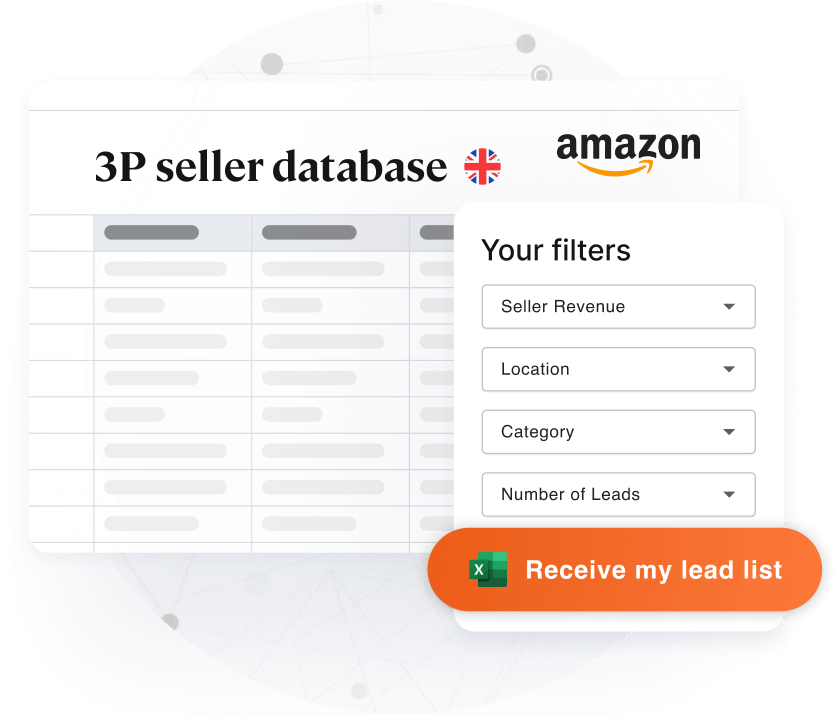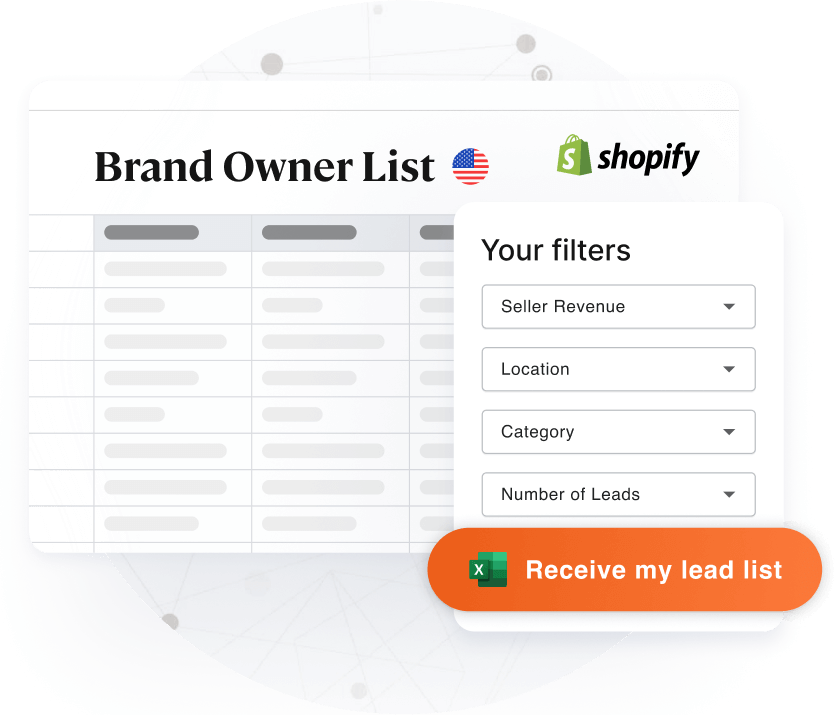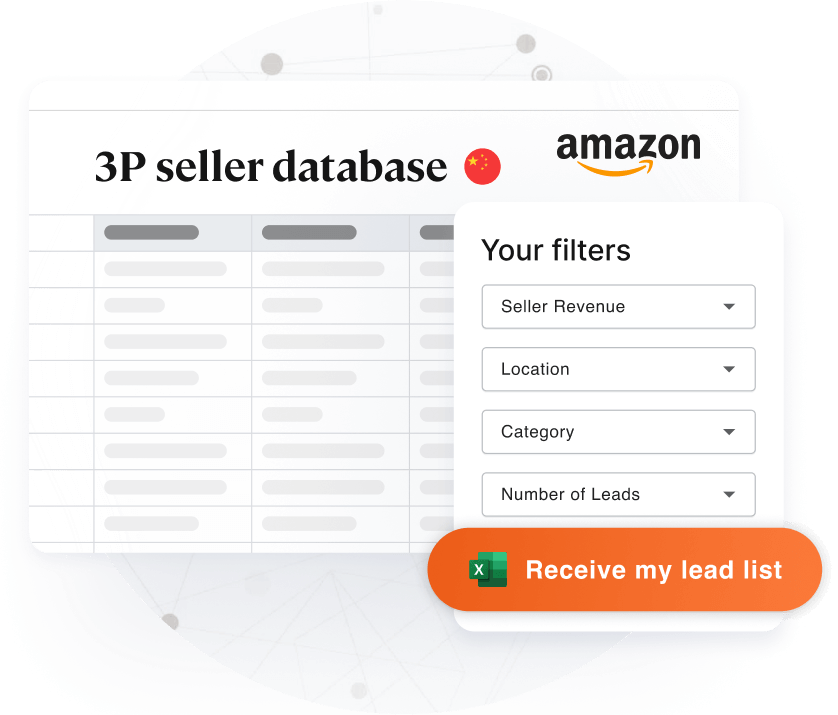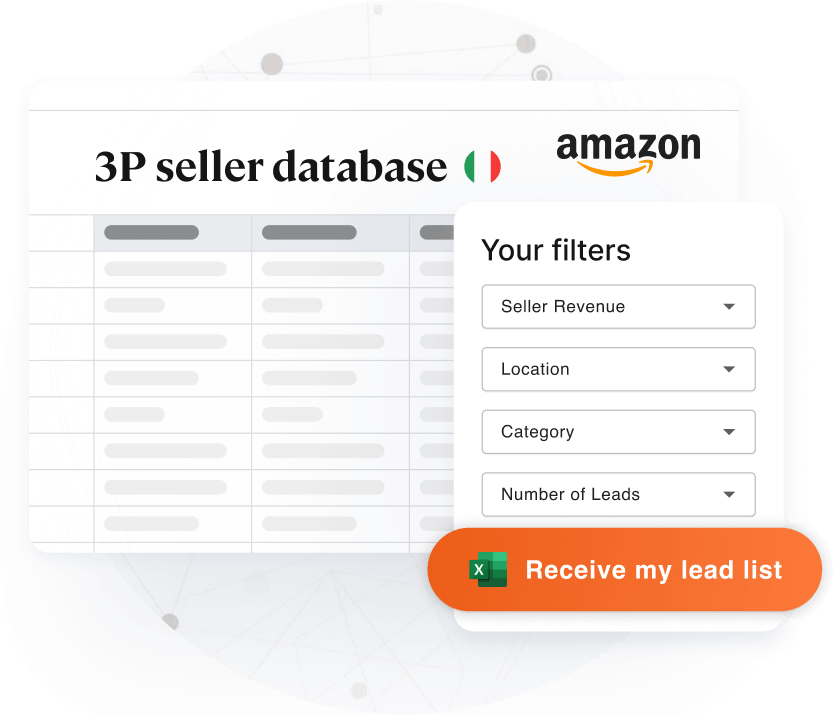B2B lead generation is easier than it seems. And it gives you a steady stream of Amazon sellers to sell your products to every time. Now, that sounds both straightforward and rewarding.
In fact, contrary to the overcomplicated case studies of “experts,” B2B lead generation becomes pretty easy when you understand your target audience and the simple basics of the concept. That’s why we’re introducing B2B lead generation and everything you need to know about it in this article.
What is B2B Lead Generation?
B2B lead generation refers to all activities you need to engage in to identify, attract, and convert potential eCommerce brand owners and Amazon seller customers who’re interested in your products or services to customers.
The activities involved in this process for a business like yours looking to sell to Amazon sellers and eCommerce brand owners include the following:
- Researching and identifying the Amazon or eCommerce sellers interested in your product or service.
- Creating and distributing marketing materials like emails, social media posts, etc., to these sellers to gain their attention.
- Assessing their level of interest.
- Developing a relationship with the most interested E-commerce brand owners.
- Guiding them through the sales process, providing them with more information about the product, and ultimately selling your solution to them.
What are B2B Leads?
B2B leads are the potential buyers (in this case, the e-commerce brand owners or Amazon sellers) who have some features that may suggest that they fit the description of your target customer or have shown some level of interest in buying your product or service. They are the focus of the B2B lead generation process.
They can be grouped into the following categories:
Marketing-Qualified Leads (MQL)
A marketing-qualified lead meets your criteria of an ideal customer and has expressed some interest in purchasing your product or service by engaging with any of your marketing materials. The chances of an MQL becoming a paying customer are very high, so they are passed on to the sales team for more focus, nurturing, qualification, and follow-up.
For instance, a marketing-qualified lead in your B2B lead generation process targeted at e-commerce brand owners and Amazon sellers would have the following characteristics:
- Their industry, company size, and demographic match those of your buyer persona
- They replied to your cold email, visited your website, filled out the form you mailed them, or engaged with any marketing materials.
- They signed up to try your product for free
Sales-Qualified Leads (SQL)
Sales-qualified leads are Marketing qualified leads that have been vetted by the sales team and have been deemed to have a higher likelihood of becoming a paying customer based on specific criteria.
A lead needs to meet some of the following to be considered a SQL:
- Having a budget that matches your product prices
- Having the authorization to make the purchase
- Needing the product and expressing such need via mail, LinkedIn message, or any other channels
Why is B2B Lead Generation Important?
B2B lead generation is an integral part of your business’s sales process and ultimately crucial to its growth and survival because it determines your revenue. Its effects can be more accurately expressed in terms of the following factors:
1. Creating and Converting Demand for your Solutions
Your B2B lead generation begins with identifying potential Amazon sellers interested in your solution/product. This step helps you discover your Total Addressable Market (TAM) to concentrate your marketing efforts on the Amazon sellers who will most likely buy your solutions.
2. Sales and Profit Projection
B2B lead generation practices provide accurate and insightful data on Amazon sellers to help you optimize your customer acquisition strategies while setting realistic sales and profit projections.
You can track conversion rates and customer lifetime value metrics to identify which Amazon sellers are high-quality leads. Based on this information, you can then set data-driven sales targets and profit projections.
3. Building Long-term Relationships With Amazon Sellers
One of the best ways to do this is by establishing trust, rapport, and credibility with Amazon sellers; you need data about these sellers to come across as genuine and convincing.
For instance, the data points on our Amazon sellers list give you some background knowledge of the Amazon seller (lead) and their business. You can then use that information to personalize your communication with them, provide them with relevant content that informs them about your service, and get feedback from them.
That’s how you convert first-time buyers to returning customers through B2B lead generation!
4. Launching Effective Marketing Campaigns
B2B lead generation gives you access to a pool of Amazon sellers interested in your solutions. With these people, your marketing campaigns are more likely to be successful because you can launch targeted marketing using important information like their demographic, company size, job title, etc.
5. Generating Revenue
All the importance discussed above ultimately leads to you generating more revenue.
B2B lead generation gives you access to a pool of Amazon sellers who will likely buy your products because they want or need them. And on top of that, it gives you access to specific details about them that make it easy for you to approach them in a manner that’ll pique their interest.
It means you’ll be making more sales and, ultimately, more revenue.
Who Conducts B2B Lead Generation?
Business-to-business lead generation is the responsibility of the sales and marketing team. Before the COVID-19 pandemic, the sales team was solely responsible for lead generation. However, the pandemic redefined sales and brought about new lead-generation opportunities that require the marketing team's expertise.
Sales
Two teams are frequently formed inside a sales team that generates B2B leads. These teams complete distinct, predetermined activities. Business Development Managers (BDMs) and Sales Development Representatives (SDRs) are the two teams.
BDMs are in charge of performing demos, closing business transactions, and producing income for the company. On the other hand, SDRs are responsible for finding and scoring leads, engaging with them, and scheduling meetings.
Marketing
Two types of marketers typically concentrate on generating B2B leads. Although their areas of expertise may overlap, their marketing strategies are significantly different. These two groups are Growth Hackers and Demand Generation Marketers.
Marketers specializing in demand generation are concerned with the entire B2B lead generation revenue cycle. Their goal is to develop leads, helping them move from being merely aware of your brand to becoming a customer and then advocating.
Growth hackers are interested in generating rapid revenue growth using the least resources. They frequently engage in less scalable activities, on average.
How is B2B Lead Generation Conducted?
The ultimate goal of B2B (Business-to-business) lead generation is to identify and cultivate the best customers for your business’ products or services.
You can do this through the following steps:
Target Identification
Target identification refers to the process of defining the types of businesses or individuals who’re likely to be interested in your services. You need to know their business inside-out.
For instance, a service provider looking to sell their products or services to Amazon sellers must identify which seller is likely to be interested in their product. Such a provider would have to check out the seller’s company size, industry, location, purchasing authority, etc.
So, suppose you sell software solutions that help Amazon sellers in the US in the health and wellness niche optimize product listings, monitor competitor activity, and track sales performances. In that case, you need to be contacting some of the sellers on our US B2B contact database.
Prospect Qualification
You already have a list of possible prospects with our Amazon sellers list. Now, you need to ascertain which options will most likely buy your products. This step requires assessing factors like their industry, budget, authority, etc.
The 30-plus data points on each seller on our directory list make this very easy for you, as you get the information you need about them without conducting rigorous background research.
Prospect Engagement
Now that you’ve filtered out the prospects with the highest probability of becoming customers, you need to start providing them with valuable information about your product. You could do that by contacting them on various channels like E-mail, phone calls, or social media, conducting demos or webinars, etc.
And your ultimate goal is to establish a relationship with potential customers and nudge them toward purchasing. If you qualify these leads properly, odds are, they’re already searching for a product like yours; you just need to make them feel convinced enough that they found the right one. You need to show their undisputable need for your product.
Lead Nurturing
Customers are more innovative these days, so they research before entering the market for a product. The result is that only 10% of qualified leads make instant purchases after engaging them, with upwards of 90% hesitating to make a purchase.
To nudge them toward making a purchase, you need to purposefully engage and walk them through the buyer’s journey until they are ready to purchase.
Deal Closing
This is the final stage in the B2B lead generation process. It involves working with your sales team to convert a thoroughly vetted lead who has expressed interest in making a purchase and is convinced to do so to a customer.
Approaches Used in B2B Lead Generation
The strategies employed during the B2B lead generation process can be broadly classified into two main categories depending on whether the activity is sales or marketing related. These are:
Inbound Strategies
Inbound strategies geared toward attracting potential Amazon sellers involve creating valuable content and experiences to attract these leads to your website or other online properties.
These strategies often coincide with marketing activities. Some of them include the following:
Content Marketing
Content marketing involves creating and sharing informative and educative content about your product with your target sellers. This content includes blogs, e-books, white papers, webinars, etc.
Account-based Marketing
Account-based marketing is a marketing approach that requires you to identify and target the key decision-makers of an Amazon seller with personalized messaging and high-value content tailored to their specific needs.
Outbound Strategies
On the other hand, outbound strategies describe lead-generation tactics that involve proactively reaching out to potential customers (Amazon sellers) to generate interest and leads.
These strategies often coincide with sales activities. Some of them include the following:
Cold Calling
This tactic involves reaching out to the Amazon seller that fits your description of an ideal customer via phone call and giving them enticing details about your business or product for the purpose of booking a follow-up call or meeting with a primary decision-maker.
You can find the phone numbers of these sellers on any of our Amazon seller directory lists.
Email Marketing
E-mail marketing is a technique that involves sending targeted e-mails to potential customers to nurture them through the sales funnel. For instance, you’ll have to send personalized newsletters and promotional emails to the emails of Amazon sellers provided on our Amazon 3P Sellers list to engage with your business and ultimately convert to customers.
These two strategies work closely to complement each other just like demand generation vs lead generation.
What Technology can Help With B2B Lead Generation?
Any technology that helps you create awareness, manage interactions with leads, or complete any other sales or marketing objective is always beneficial.
Creating website content and managing social media accounts can only be possible with the tools for audience and keyword research, scheduling, and designing. You also need Customer Relationship Management systems and a Customer Data Platform to organize customer interaction with your team and collect data on customer behavior with your brand.
Every B2B lead generation company will need various tools for the different stages. The whole set of tools a company utilizes in B2B lead generation is the technological or tech stack.
Conclusion
Every business needs a consistent flow of quality leads who will eventually become paying customers. Through B2B lead generation, a company's sales, in collaboration with their marketing team, can discover prospects and nurture their interest until they become lifelong paying customers. B2B also helps companies understand their customers, how they interact with their brands, and how they can better serve them.
Following B2B best practices is vital if you plan to be effective. Above all, B2B lead generation can be advantageous once you realize it isn’t a quick fix, and so it must be approached strategically and with the long-term in mind. We encourage you to try what you have read in this article and give us feedback on the results.






